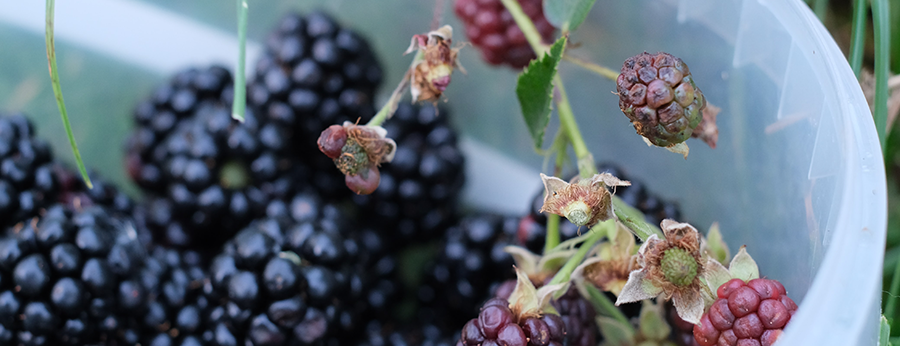
How to Make Blackberry Wine
Grapes may be the go-to for winemaking, but they don’t have to steal the show every time. One fruit that works especially well when it comes to winemaking is blackberries. They tend to be less acidic than other berries, which results in a smooth, well-rounded flavor.
Fresh blackberries can work well, especially if you have a fondness for foraging. An easier route would be to grab a bag or can of ready-to-go pre-sterilized blackberry puree can or pouch, skip straight to a blackberry fruit wine base, or use frozen blackberries from the store (no shame in that)! If using frozen blackberries, here are a few tips to increase fruit extraction and prevent freezer burn.
This blackberry wine recipe will create a dark and decadent dessert wine that you can pair with black forest cake, cheesecake, fruit tarts, or whatever summer treats you’ll be having next year when it’s ready.
If you’re new to winemaking, you might wonder why such a sweet berry would need even more sugar added. While it is a preference on how sweet or dry you make your wine, not adding any will result in a wine that is a VERY dry wine and has a low ABV. The added sugar not only sweetens but also really brings out the flavor in fruit wines and allows for more alcohol production to take place.
Before starting, make sure you properly sanitize your wine equipment.
Ingredients for a 1 gallon batch:
- 4lbs blackberries (fresh or frozen)
- 2.5 lbs white sugar
- 1 gallon spring water
- 1 tsp acid blend
- ½ tsp pectic enzyme
- 1 tsp yeast nutrient
- 1-2 campden tablets (1 optional during stabilizing)
- 1 packet of Red Star Montrachet Yeast (or other red wine yeast)
- Optional: ½ tsp wine stabilizer of choice
Instructions:
- If using fresh blackberries, rinse them well. It helps to smash them up a bit (easiest in a food processor) and let them sit in the sugar. This maceration draws out more juices, but isn’t completely necessary. If you’re using frozen blackberries, this step is not needed as the freezing then thawing will help break them down.
- Place berries and sugar in a large, sanitized pot fit with a straining bag and mash with a potato masher. Mash and stir to fully blend the berries and sugar together.
- Add your gallon of water and keep stirring. Heat to a near boil, then lower to a gentle simmer for 30 minutes.
- At the end of the 30 minutes, stir in the acid blend, pectic enzyme, and yeast nutrient (not the yeast).
- Pour the mixture into a sanitized fermentation bucket. Cover with lid and airlock.
- Once at room temperature (can be next day), stir the mixture with a stir spoon and check the gravity of the liquid. Write it down somewhere you’ll remember months from now - to calculate your ABV.
- Add crushed Campden tablets and stir thoroughly before re-securing the lid and letting sit for at least 12 hours.
- Add the yeast into the fermenter and re-cover with the airlock.
- Stir daily until gravity drops to 1.020 or below.
- Within the next couple days, you’ll notice yeast activity letting you know your fermentation is well underway. After a week, activity will slow and you can siphon into a carboy and leave it undisturbed for a month. If using a straining bag, press juice and discard pulp and seeds.
- Rack the wine again (siphon), this time to get it off the sediment that has settled to the bottom, into another sanitized carboy. Cap again with airlock and leave undisturbed, this time for 2-3 months.
- Rack once more, this time leaving it for another 3 months.
- After this, when your wine has not shown fermenting activity for a month or so (no bubbles or sediment), you can check your final gravity and move on to bottling.
- Optional (but highly recommended): If stabilizing, add a crushed Campden tablet and potassium sorbate, then wait 2-3 days before bottling.
- Allow the blackberry wine to bottle age at least 6 months before tasting.
More information about wine:
